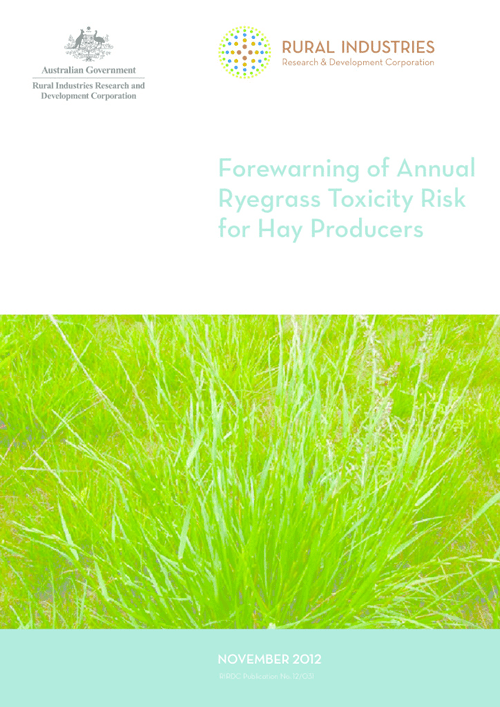Annual Ryegrass Toxicity (ARGT) is a disease of livestock that results from the consumption of sufficient quantities of toxic ryegrass seedheads. The seed heads are rendered toxic when they are infected by a bacterium, Rathayibacter toxicus, which is introduced into the seedhead by a nematode, Anguina funesta. The disease can arise from the consumption of any feed that contains the toxic seedheads, including pasture, crop stubbles, hay and grain.
The outcome of this study is a web-page on the website of the Department of Agriculture and Food Western Australia where the potential risk of incidence of R. toxicus is mapped each year across the agricultural region of Western Australia by July 30. This provides producers of cereal hays
fore-warning of the risk of incidence of ARGT each year, and can alert producers of cereal grains and of grazing livestock in the same areas to be aware of the risk of ARGT.





